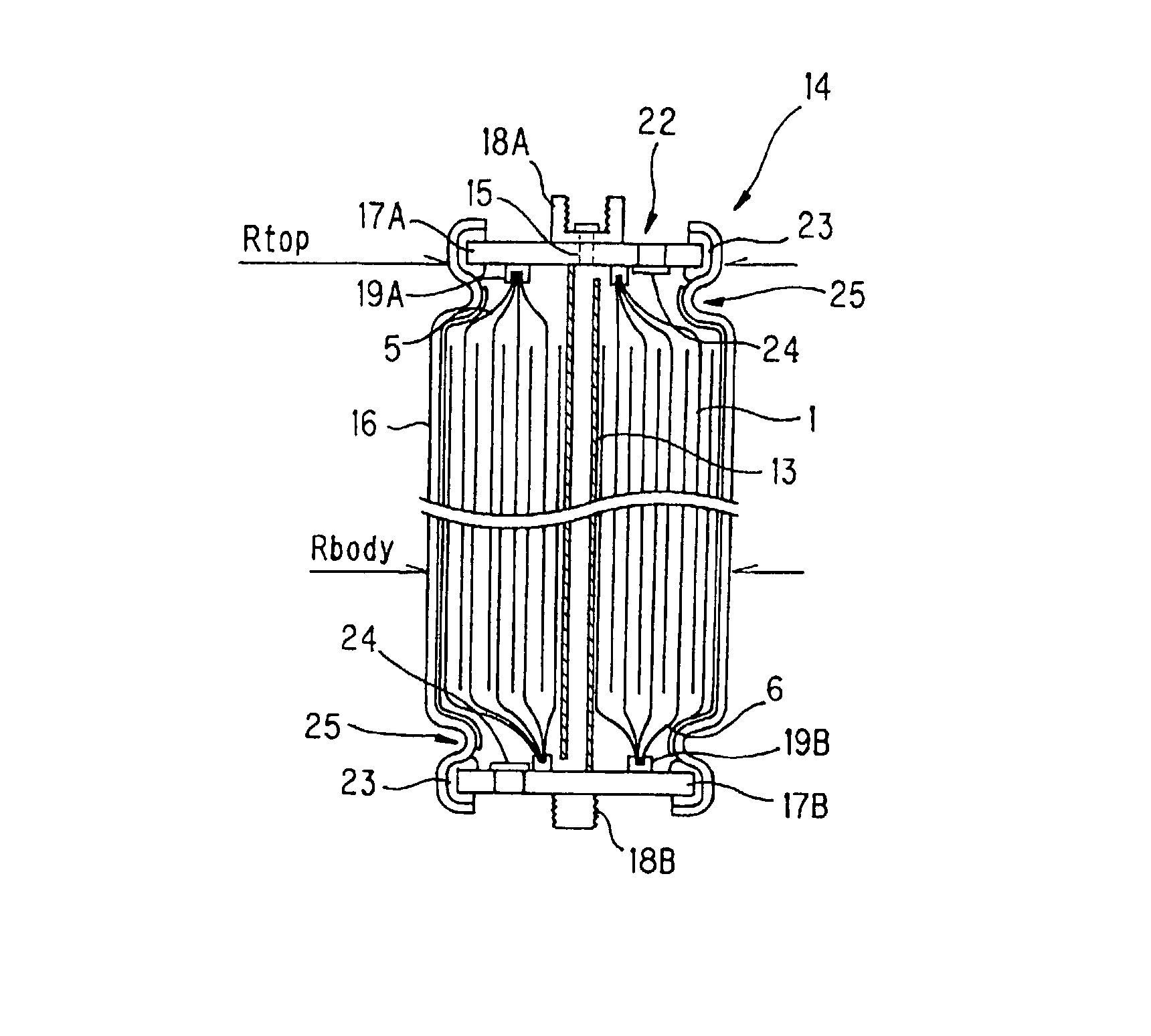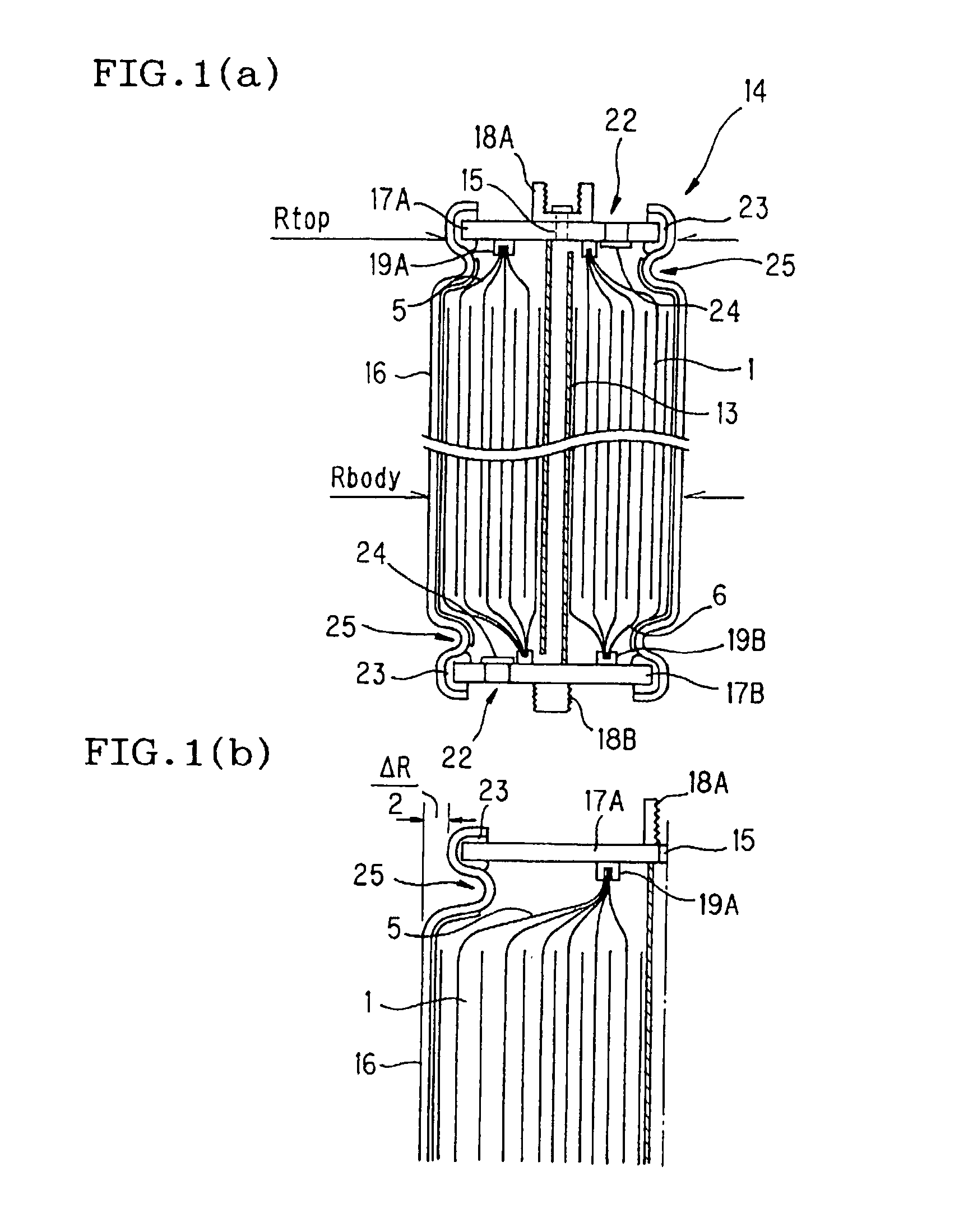Lithium secondary cell and method for producing the same
a secondary cell and lithium technology, applied in the manufacture of secondary cells, cell components, cell components, etc., can solve the problems of difficult long-term sealing, electrolyte solution existing in the body part of the battery case, etc., to improve the efficiency of secondary cells, and improve the effect of battery temperatur
Inactive Publication Date: 2003-02-20
NGK INSULATORS LTD
View PDF24 Cites 29 Cited by
- Summary
- Abstract
- Description
- Claims
- Application Information
AI Technical Summary
Benefits of technology
0069] In order to control battery temperature increase at the time of welding, the welding method with high input energy density is good, and in particular the welding method in which the above-described temperature reaches not more than 100.degree. C. is preferable. As that kind of welding method, there are laser welding and electron beam welding in which the welding beam (arc) is concentrated. Laser welding can proceed with welding in the atmosphere, and an apparatus is simple and of good productivity. To the contrary, it is necessary to proceed with electron beam welding under a vacuum state, and much costs are incurred depending on an apparatus, and the manufacturing steps increases in number.
0070] Among laser welding methods, YAG laser welding used in the present invention provides high energy density of its beam, can execute welding on aluminum in a short time, and can limit temperature increase to the least level, and thus is capable of realizing highly reliable welding.
0071] In the fourth invention, as a battery case, it
Problems solved by technology
The battery formed by this method will not give rise to any problem in the case where it is used as a power source for electronic equipment such as communication apparatus or computers, but it requires sufficient durability against vibrations taking place at the time of starting an engine or at the time of running in the case where it is used as an engine driving or motor driving battery for an electric vehicle, etc., giving rise to a problem that it is difficult to hold long term sealing.
However, in the manufacturing method described in Japanese Patent Laid-Open No. 10-27584, the electrode body is imp
Method used
the structure of the environmentally friendly knitted fabric provided by the present invention; figure 2 Flow chart of the yarn wrapping machine for environmentally friendly knitted fabrics and storage devices; image 3 Is the parameter map of the yarn covering machine
View moreImage
Smart Image Click on the blue labels to locate them in the text.
Smart ImageViewing Examples
Examples
Experimental program
Comparison scheme
Effect test
 Login to View More
Login to View More PUM
| Property | Measurement | Unit |
|---|---|---|
| Fraction | aaaaa | aaaaa |
| Fraction | aaaaa | aaaaa |
| Length | aaaaa | aaaaa |
Login to View More
Abstract
A lithium secondary battery, includes: a cylindrical battery case (16) provided with electrode caps at both end portions thereof; an electrode body (1) impregnated with a nonaqueous electrolyte solution and contained in the battery case and including a positive electrode, a negative electrode, and a separator, the positive electrode and the negative electrode being wound or laminated through the separator; and moreover, an elastic body (23) disposed between the battery case (16) and the electrode caps with portions in which the battery case (16) contacts the elastic body (23) being brought into press-contact to form a caulked portion to seal the battery case (16). With Rbody (mm) being diameter of a body part of the battery case (16), Rtop (mm) being diameter of the caulked portion, Rbody and Rtop fulfill relationship of Rbody>Rtop. Improvement in long period stability and reliability can be planned by intensifying the caulking between the battery case and the electrode cap and by removing the caulked gap between the battery case and the electrode cap so as to suppress leakage of the electrolyte solution.
Description
[0001] The present invention relates to a lithium secondary battery (hereinafter to be referred to as "battery") as well as a manufacturing method thereof, and further in particular, a lithium secondary battery which is superior in long period stability and reliability as well as a manufacturing method thereof in which steps are simple and superior in productivity.[0002] In recent years, lithium secondary batteries are widely used as a power source for electronic equipment such as portable communication equipment and a notebook-sized personal computer. In addition, requests for resource saving and energy saving are raised for international protection of the earth environment, and the lithium secondary battery is being developed as an engine driving or motor driving battery for an electric vehicle, or a hybrid electric vehicle, (hereinafter also to be referred to as "selectric vehicle, etc.").[0003] Conventionally, a lithium secondary battery is sealed by bonding a tip portion of a b...
Claims
the structure of the environmentally friendly knitted fabric provided by the present invention; figure 2 Flow chart of the yarn wrapping machine for environmentally friendly knitted fabrics and storage devices; image 3 Is the parameter map of the yarn covering machine
Login to View More Application Information
Patent Timeline
 Login to View More
Login to View More IPC IPC(8): H01M10/05H01M4/00H01M10/04H01M10/052H01M10/058H01M50/169H01M50/186H01M50/193
CPCH01M2/0413H01M2/08Y10T29/4911H01M10/052Y10T29/49108H01M10/0431H01M50/171H01M50/186H01M50/193H01M50/169
Inventor ENOMOTO, AKIOKAWAMURA, KENJIKITOH, KENSHINYOSHIDA, TOSHIHIRO
Owner NGK INSULATORS LTD
Features
- R&D
- Intellectual Property
- Life Sciences
- Materials
- Tech Scout
Why Patsnap Eureka
- Unparalleled Data Quality
- Higher Quality Content
- 60% Fewer Hallucinations
Social media
Patsnap Eureka Blog
Learn More Browse by: Latest US Patents, China's latest patents, Technical Efficacy Thesaurus, Application Domain, Technology Topic, Popular Technical Reports.
© 2025 PatSnap. All rights reserved.Legal|Privacy policy|Modern Slavery Act Transparency Statement|Sitemap|About US| Contact US: help@patsnap.com



